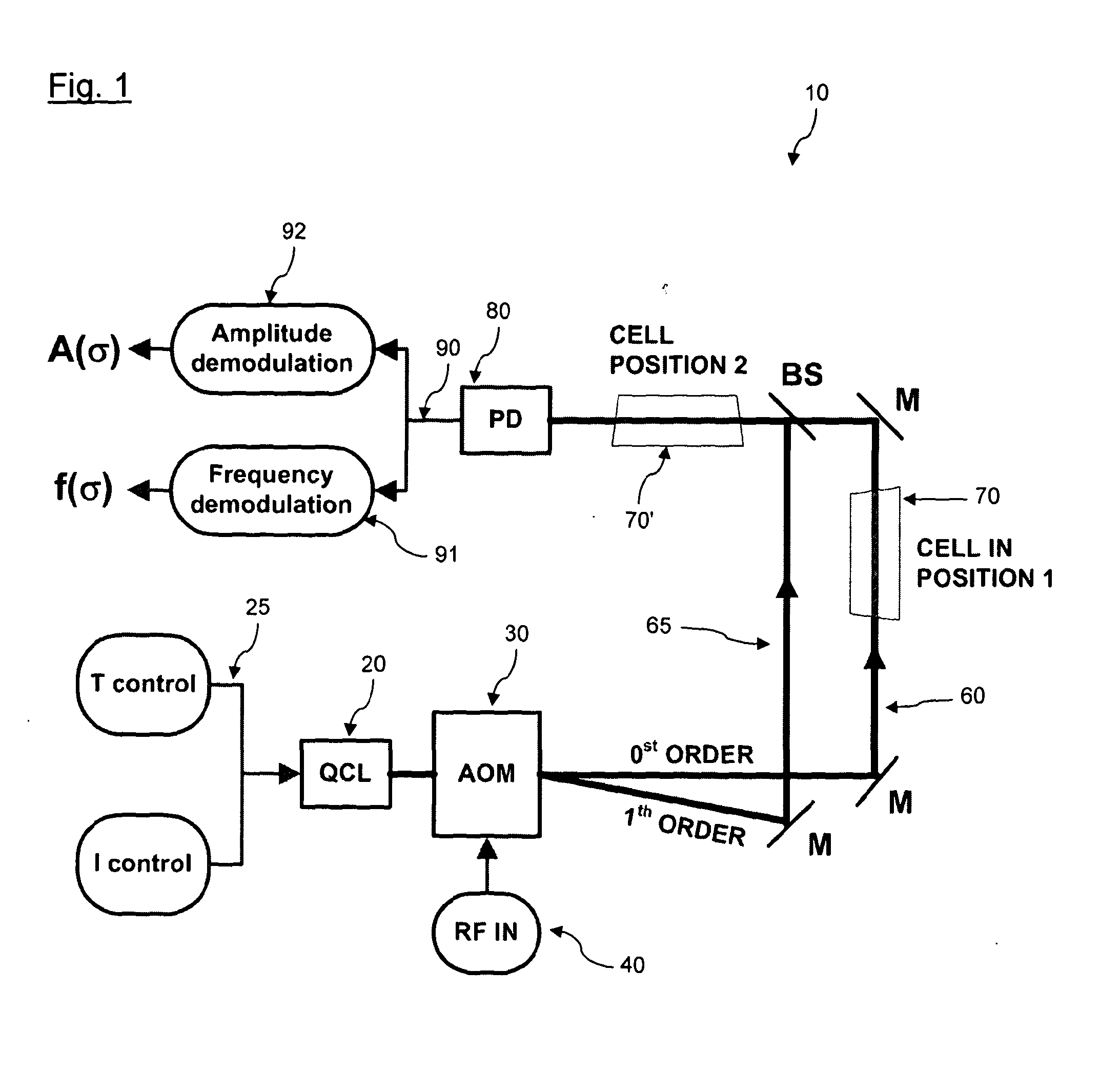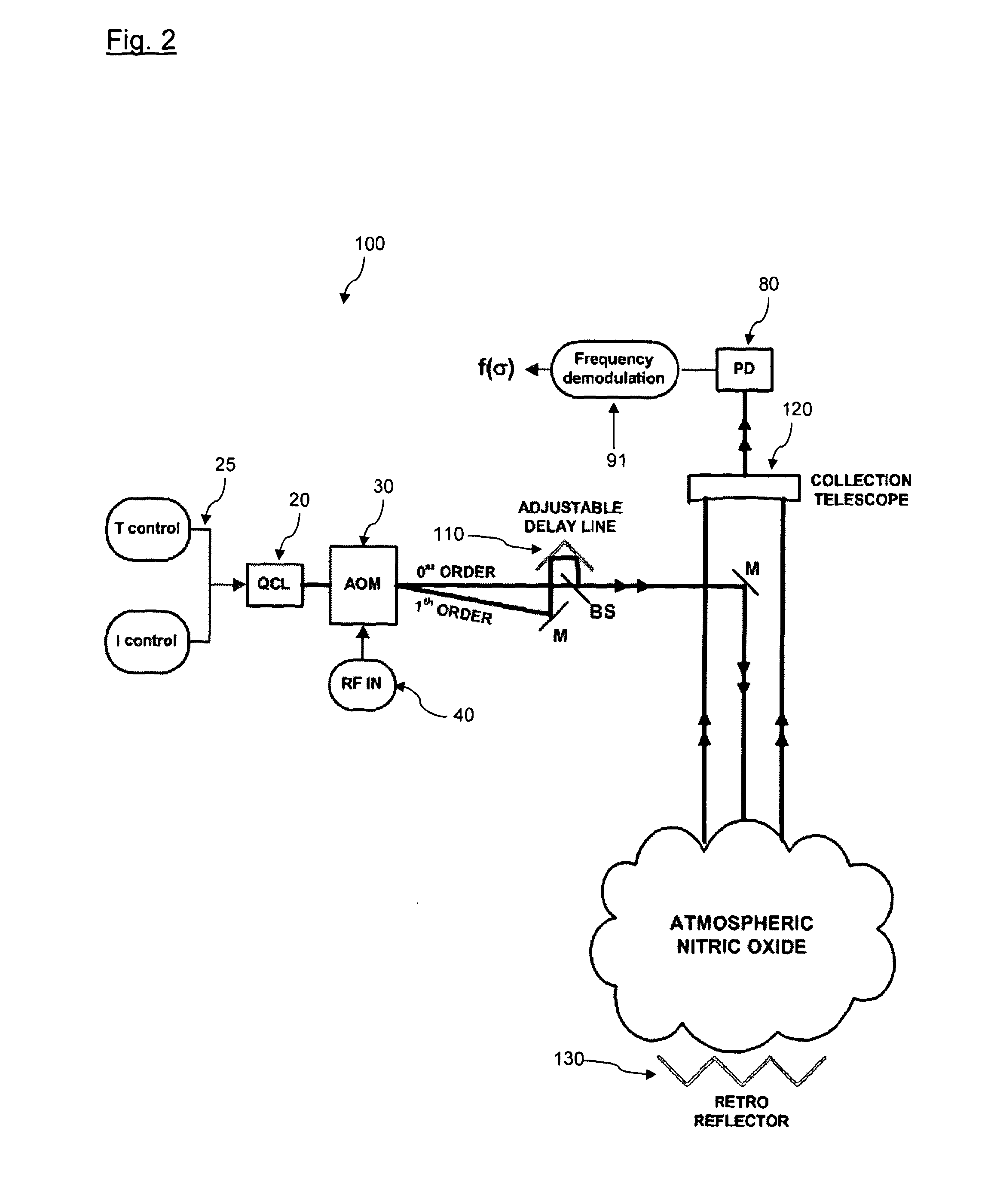Detecting species in a dilute medium
a technology of dilute medium and species, applied in the direction of phase-affecting property measurement, instruments, measurement devices, etc., can solve the problems of sudden change in refractive index, and achieve the effect of cancelling out unwanted optical effects
- Summary
- Abstract
- Description
- Claims
- Application Information
AI Technical Summary
Benefits of technology
Problems solved by technology
Method used
Image
Examples
Embodiment Construction
[0047]Quantum cascade lasers (QCL) have been used to measure absorption signal of molecular gases in a particular fingerprint region. These implementations of QCL-based tunable laser absorption spectroscopy are primarily based on trace gas detection and / or real time gas monitoring via laser intensity changes. The present invention instead uses a refractive index change to measure a species in a dilute medium and especially in gas or air.
[0048]For particularly dilute mixtures, this change in refractive index may be very small and subject to higher levels of noise. FIG. 1 shows a schematic diagram of a system 10 for detecting species in a dilute medium that uses the change in refractive index phenomenon described above. QCL 20 is tuneable and may be chirped (i.e. wavelength-varied over a period) by controls 25. The laser beam from the QCL is split into two laser beams using an acousto-optic modulator (AOM) 30 driven by a radio frequency (RF) supply 40. The first beam corresponds with ...
PUM
| Property | Measurement | Unit |
|---|---|---|
| optical frequency | aaaaa | aaaaa |
| optical frequency | aaaaa | aaaaa |
| wavelength shift | aaaaa | aaaaa |
Abstract
Description
Claims
Application Information
 Login to View More
Login to View More - R&D
- Intellectual Property
- Life Sciences
- Materials
- Tech Scout
- Unparalleled Data Quality
- Higher Quality Content
- 60% Fewer Hallucinations
Browse by: Latest US Patents, China's latest patents, Technical Efficacy Thesaurus, Application Domain, Technology Topic, Popular Technical Reports.
© 2025 PatSnap. All rights reserved.Legal|Privacy policy|Modern Slavery Act Transparency Statement|Sitemap|About US| Contact US: help@patsnap.com



